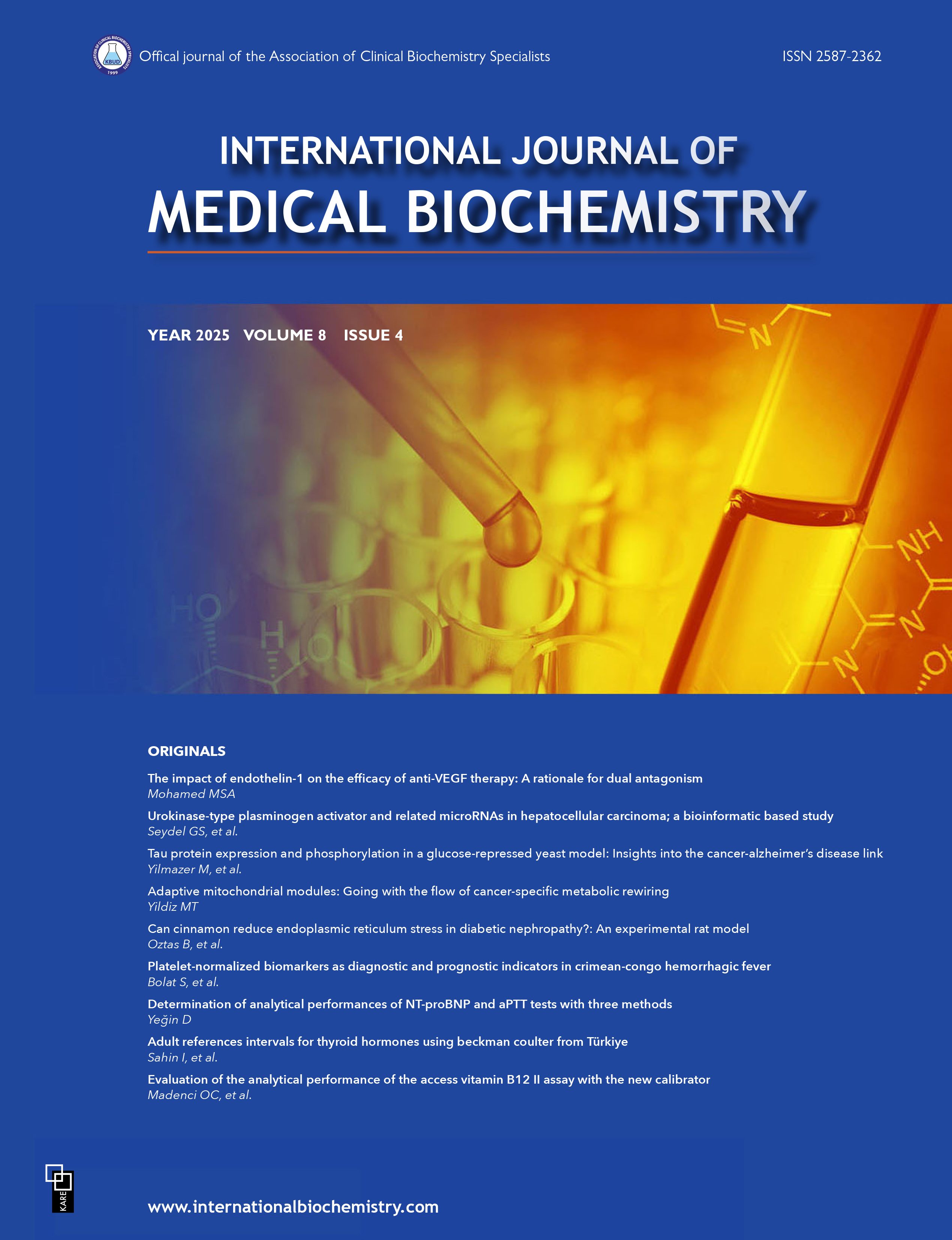Sigma metric evaluation with different TEa targets in clinical biochemistry
Şeniz KorkmazCentral Laboratory, Karacabey State Hospital, Bursa, TurkeyINTRODUCTION: The aim of this study was to evaluate the analytical performances of various clinical biochemistry analytes by the sigma metrics method according to different total allowable error (TEa) targets and to determine the causes of errors that lead to low sigma score by using Quality Goal Index (QGI).
METHODS: The study was carried out in the Central Laboratory of Bursa Karacabey State Hospital. Twelve analytes that were studied on the Roche Cobas c 501 autoanalyzer were included in the study. Internal (level 1 and 2) and external quality control data for the period March August 2020 were obtained retrospectively. The TEa targets were obtained from the Clinical Laboratory Improvement of 2019 (CLIA 2019), biological variation database (BVD), Rili-BAEK, and Turkish data. QGI was calculated for analytes with sigma score <3 according to CLIA.
RESULTS: According to the TEa goals of four different guides, different sigma scores were obtained. Three parameters with sigma scores <3 were determined according to TEa targets of CLIA, 8 according to BVD, and 6 according to Rili-BAEK, while there were no parameters with sigma score <3 according to the TEa targets of Turkey. Number of parameters with sigma scores >6 were 7, 10, 6, and 18 according to TEa targets of CLIA, BVD, Rili-BAEK, and Turkey, respectively. When QGI was calculated, it was found that there was inaccuracy problem for albumin and chlorine L1 and imprecision for chlorine L2.
DISCUSSION AND CONCLUSION: Laboratories should determine the appropriate TEa targets and use the sigma metrics method and QGI as a quality improvement tool. In the light of the obtained data, necessary quality improvements should be made, and the reliability of the results should be increased.
Manuscript Language: English







